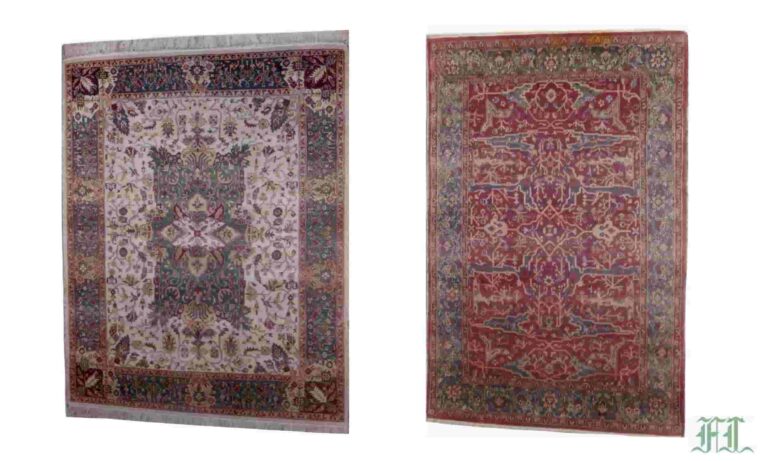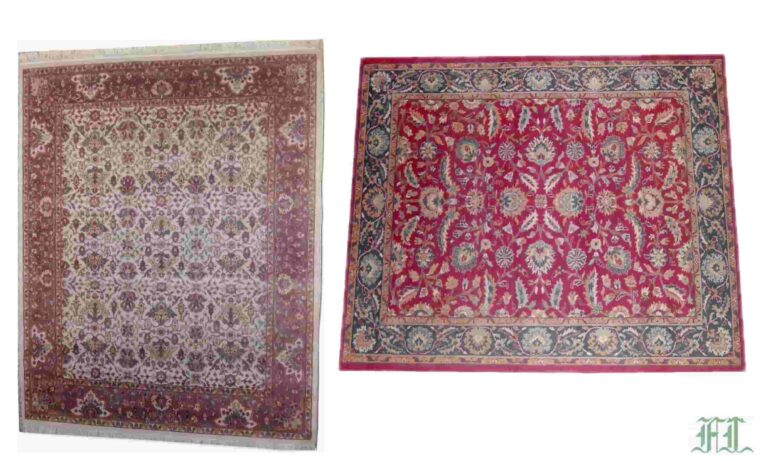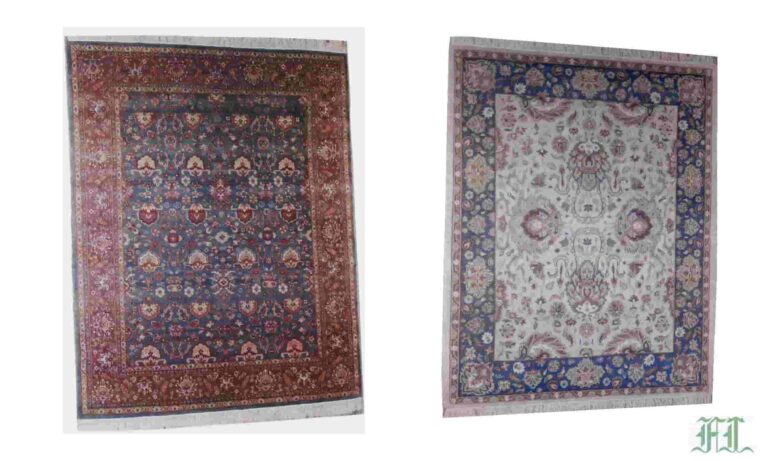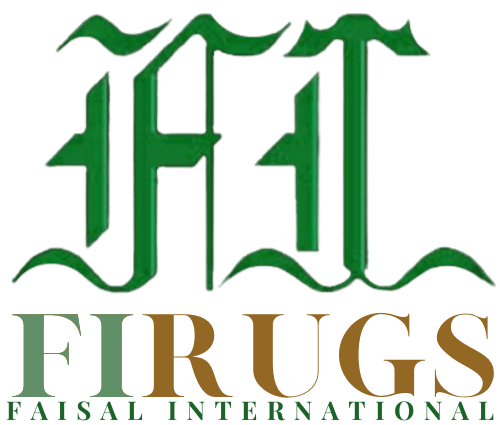
Table of Contents
VEGETABLE DYED RUGS
Vegetable dyed rugs are those where the dying wool rug is with natural elements obtained from plants. Unlike chemical dyes, they are environment friendly and of great worth. Vegetable dyed Persian rugs/carpets are the best examples to point a few.
The use of natural dyes or vegetable dyes on textiles was found in China nearly 2,600 BC. Later, with the popularity of natural colors, artisans began to dye carpets. People were using natural pigments to dye any fiber material such as fabric, yarn, wool, thread, silk, cotton, etc. In no time vegetable-dyed tribal rugs got to its peak demand worldwide.
Click to know about herbal rug washing at Faisal International.
History Of Veg Dye For Rugs
To make permanent color we have to use both a mineral mordant and a plant extract for most of the vegetable dyes.
If a vegetable dye rug is intense in color, it means the color is more in-depth, and the use of extracted plant colors is too much in it.
The use of mineral mordants is essential to use in the same ratio. For a pale color, we can use it in a little amount. Do not use more of it, because too much metal is not suitable for fiber or wool.
There are two kinds of dyes. The one is synthetic, which is human-made, and the other one is natural that comes from plants or animal origins.

Natural Vegetable Dyes Vs Chemical
SYNTHETIC
The use of synthetic dyes got discovered in 1856. Before that, the use of natural dye was mainly in practice. Synthetic dye rugs are chemical dyes or any made from unnatural dye resources.
NATURAL
The most common plant dyes are Madder, Indigo, etc. Some animal dyes include Tyrian-purple, Cochineal, and others.
Undoubtedly, we can find other animal and plant dyes, but their variety of colors are very less. The developed shades have minimal values of color.
The plant-based dyes are known as natural dyes, and they have a very perceptible appearance about them. Their stage of life is tremendous and rhythmically balanced.
Natural Vegetable Dyes For Wool Rugs
Below are a few natural wool dye plants that help extract colors from different parts of them(leaves, fruits, barks) that dye well on wool fiber. Here, the blend of one or more colors creates a new color. These are some conventional natural dyes that make the best of vegetable dyed rugs.
FOR BLUE DYE
Indigo
Berries
Roots of Yellow Iris
Red Bearberries
Sloe, the fruit, etc
FOR RED DYE
Roots of Madder
Roots of Bed-straw
Roots of Marsh Potential
Cochineal (an insect)
Gromwell
Dry Rose Petals, etc
FOR YELLOW DYE
Turmeric
Leaves of Pear
Leaves of Poplar & Willow
The fresh inner bark of Ash
Root and stem of Barberry, etc
FOR BLACK DYE
New shoots of Blackberry with salts of iron
Roots of Dock
Meadowsweet
Roots of Iris, etc
FOR BROWN DYE
Skin of Onion
Bark of Birch
Bark of oak
The root of Water Lily
A mix of green and red leaves and barks, etc
FOR PURPLE DYE
Fruits and leaves of Blackberry
Roots of Dandelion
Violet with salt and alum
A mix of red and blue leaves and barks, etc
FOR GREEN DYE
Neem for light green
Mango leaves for darker green
Spinach
Leaves with an alum of Elder
Note: There are many different leaves added of different plants to create some specified green color.

Difference Between Synthetic And Natural Dyes
Synthetic dyes are those treated with unnatural colors. Most of the woolen rug types sold worldwide are synthetic dyed. Synthetically dyed rugs, however, cost less and are undoubtedly popular and high in demand too.
In vegetable-based dyes, we can easily find a little amount of difference in the color itself. The variation even comes from using different kinds of wool and the way the wool got spun. The thread of hand-spun yarn is always uneven, and it will take the colors of the dye at various grades of the same shade. The shade will also give too many differences in eye-catchy color variations as compared to machine-spun wool.
Pros Of Vegetable Dyed Rugs
- The vegetable dyes are more durable and unaffected by light, especially sunlight in comparison with aniline or chemical or synthetic dyes.
- They are environment friendly as there are no chemical elements used in dying their fiber.
- Also, they are safe for kids. Babies tend to lay on the rug and rub their face on it playfully.
- They are the original form of an ancient way of dying rugs.
- It follows the natural components of washing using “shikakai”(an ayurvedic plant). Hence, they are an overall natural product. Feel more closer to nature with your herbal dyed rug.
Vegetable Dyed Wool Rugs
In naturally dyed wool rugs, if the wool is profoundly saturated, you will find a little color variation which will only show up after the carpet starts getting old. The name given to this type of modification is called “abrash”. It gives an unspecified artistic class and a powerful influence to ethnic or tribal rugs which in general are supremely valued.
A perfect and very well natural wool dyed rug brightness up hallways, living rooms and guest rooms and acquires breathing.

How To Clean Vegetable Dyed Rugs
It is always a good idea to get your vegetable dyed rug washed by a professional rug cleaner every few years. The reason for this is that vegetable dye rugs require some special treatment, especially when you do not know how the rug’s color will behave on the wash.
Clean At Home
At every regular interval of time, you can vacuum your woollen rug and deal with spills and dirt. If the carpet is colorfast, you can wash it by hand at home using a shampoo or any mild detergent with the help of a white cotton cloth, sponge or a soft brush.
Use a little amount of liquid as much as possible to the affected area with a sponge soaked in Seltzer. Smirch the spotted area by using a white cotton cloth then squeeze the blemish or dirtiness between two thick cotton or two towels and press it hard with both hands or stand on top of it for a short while to remove excess water. After that, leave the rug to dry in sunlight but for not too long.
Do Vegetable Dyed Rugs Bleed?
As we already know, the color we get from a colorant collected in the shade chains to the threads. It happens with either synthetic dyes on synthetic yarns or vegetable dyes on the natural thread. The same rule applies to them. The color takes place differently in the process when an observable flare is noticed or imitated by the thread that happens from the inclusion of this dye material.
It influences the habit our brain and eyes distinguish the color.
There are so many dyes that do not generate strong restraints with the thread. Compared to chained thread yarns, in a plain thread, the color will come out very effortlessly as the color is only straddling at the topmost of the thread. So, a few colors incline to disappear on constant washing. If the thread is very tight, the competing of the fabric will become firmer to the fading.
The dependence of the materials which withstand color fading is all deserved on a color-science balance.
Why Are Vegetable Dyed Wool Rug More Expensive?
- The wool of the rugs dyed with a natural procedure requires a much longer time than chemical dyes. Vegetable dyes incline to be very much lightfast, which means the fading process is more prolonged than synthetic dyes.
- To dye wool in a vegetable way for rugs needs more labour force to color them. More labor means the price of these rugs become more expensive.
- The dyestuff of the vegetable colors is very costly as compared to chemical or synthetic dyes. The dyes, technique of making, and the materials are the foremost details that raise the price of the rugs. Hence, this is the reason why these naturally dyed rugs are so expensive.
If you are looking to order vegetable dyed rugs or need a sample, do contact Faisal International at info@faisalinternational.com
